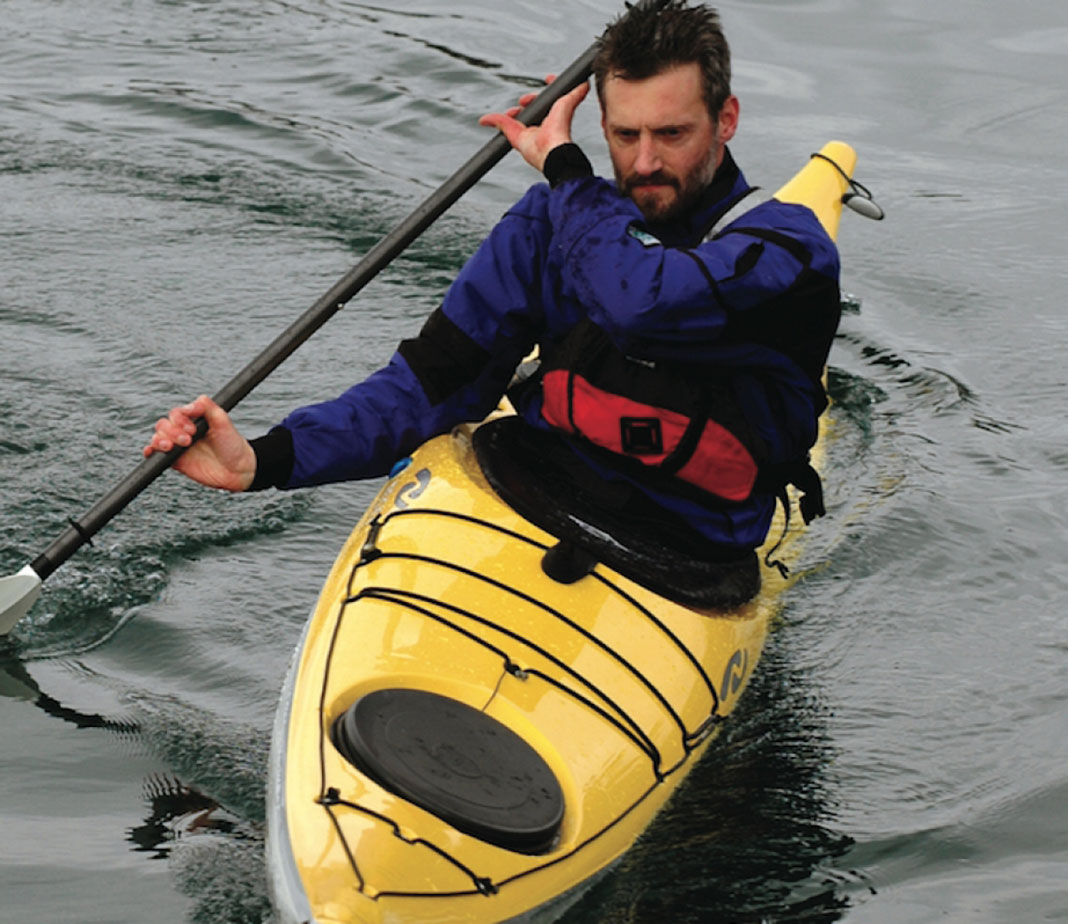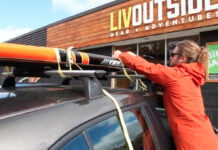The bow draw, also known as the bow rudder, is an efficient and elegant turning stroke that provides remarkably fine control over the bow of a sea kayak. It is excellent for making minor course corrections and essential for maneuvering in and out of really tight places. Follow these tips to get the benefits of a properly-executed sea kayak bow draw for yourself.
Learn the Sea Kayak Bow Draw
If you’re slipping between two other kayaks, playing around rocks, or negotiating a gap between boulders, a bow draw stroke combined with some forward momentum can give you that last-second fine adjustment you need to hit your line and thread the needle.

The bow draw turn requires forward momentum, so start with good speed.
To get the most turning power, initiate your turn with a sweep stroke on the opposite side. Then rotate your torso aggressively in the direction of the turn and plant your paddle in the water in front of your body, about a foot or two out to the side, beside your knee. Reach across your forehead with your upper arm with your paddle shaft vertical. Keep the lower arm close to your body to keep your shoulder safe.
Angling your blade
Angle your paddle blade with the leading edge outward so that the power face of your paddle catches water, loading the blade. The more you open the blade to the oncoming water and the further out you plant your blade, the more force you will generate with this stroke.
Time and practice will allow you to dial in the amount of blade angle that is appropriate for each situation. Too much angle will load your blade too much, acting more like a brake than a turning stroke. Too little angle will not generate much turning power at all.
Because you’re catching water with this stroke, it will slow your boat down as it turns. As you lose speed, draw the blade in to your toes to finish the stroke. You’ll then be in a perfect position for a forward stroke to get yourself going again, without even lifting your blade out of the water.
Increasing efficiency
As with any turning stroke, tilting your boat on edge away from the turn will greatly increase the efficiency of the turn. For the bow draw turn, this means tilting the kayak away from your paddle side. Because the bow draw doesn’t generate much support and you’re edging on the opposite side, tilting on a bow draw requires confident balance and solid paddle control. Start playing with bow strokes on flat water and work up to putting your kayak on edge. Once you get comfortable, the bow draw will naturally find its way into your paddling repertoire in rougher conditions.
Alex Matthews is the coauthor (with Ken Whiting) of the book Touring and Sea Kayaking—The Essential Skills and Safety and the instructional DVD The Ultimate Guide to Sea Kayaking, published by the Heliconia Press.
This article was first published in the Fall 2007 issue of Adventure Kayak Magazine. Subscribe to Paddling Magazine’s print and digital editions, or browse the archives.
Alex Matthews executes a bow draw in his Wilderness Systems sea kayak. | Feature photo: Rochelle Relyea







